Marostica, a charming Medieval walled town on the hills of Vicenza, is most famous around the world for hosting a spectacular living chess game that takes place every two years in September. Other than that, it’s an important producer of cherries and played a fundamental role in introducing coffee in the Old Continent. Let’s walk together and explore this little gem of the Veneto region.
As you probably already know if you stick around here, I’m from the neighbourhood of Vicenza and I’m always quite pleased to talk about the Palladian city and the area surrounding it. What I’m always keen to share – other than itineraries and touristic spots – is the multi-layered identity of Veneto and of the whole Italy, which are all but simple to comprehend (even for natives, believe me).
As Italians we are often depicted as stuck in our own ways and traditions and that might be true to some extent, but the fact is that our culture and customs are the results of centuries of history and different populations who have occupied the country. Marostica is the perfect example to understand that: its history is the history of the whole Italy, a land contended and influenced by many peoples.
TRACES HISTORY LEFT IN MAROSTICA
Marostica, a small town at the foothills of the 7 Comunes, also known as the “Asiago Plateau”, is a medieval walled settlement of great military importance. Here there is what history and battles have left in Marostica:
-
THE UPPER CASTLE
Marostica has a peculiar location, in between hills and flatland, and since 1000 there has been fortification at the top of the hill to protect the town below. Being in a strategic position, the city has always been contended by different armies and during the 13th century the domination ping-ponged several times between the cities of Padua and Vicenza.
At the beginning of the 14th century, Cangrande della Scala, the lord of Verona, began his conquest of the whole Veneto (Venice excluded) and in 1311 he got his hands on Marostica. Few years later Marostica was attacked again and Cangrande decided to build a proper castle up the hill, which ruins you can still see nowadays.
-
THE TOWN WALLS
Along with a renovated Upper Castle, the Lord of Verona decided it was best to build walls all around the town to protect it from invaders. It was an impressive effort: 1800 m long walls with walkways on the battlements and 24 small towers.
-
THE LOWER CASTLE
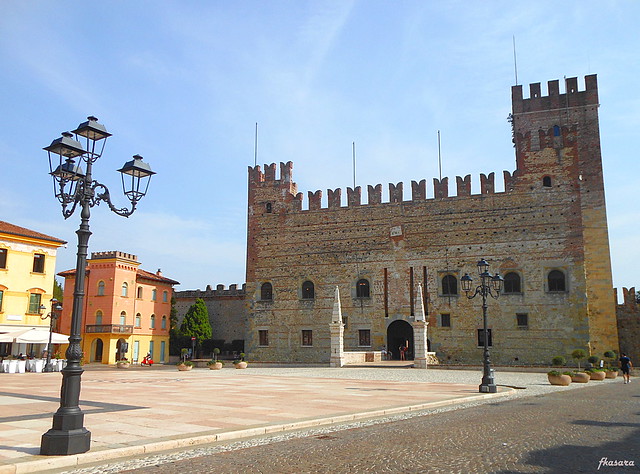 Other than the Upper Castle, the Lord of Verona thought another castle downtown would be very useful.
Other than the Upper Castle, the Lord of Verona thought another castle downtown would be very useful.
-
PIAZZA CASTELLO
After a very brief domination of the Lord of Milan and various raids of the Hungarians, in 1404 the Venetian rule began. We can clearly see it in the main Piazza Castello, where the Lower Castle, which overlooks the piazza, turned into the Venetian governor’s dwelling place and where a column with the winged lion, the symbol of the Most Serene Republic of Venice, was erected.
During the Venetian rule, the Doglione Palace, which faces the Lower Castle, served as armoury, chancellery and also as Monte di Pietà (which is some sort of public pawnshop).
With the fall of the Republic of Venice at the very end of the 18th century, the domination of Marostica and the whole Veneto ping-ponged between France and Austria several times over the course of a century, before they became part of the Reign of Italy in 1866. Quite a turbulent past as you can see and, believe me, this is the sort of destiny several cities in the country were subjected to.
WHY MAROSTICA IS THE CITY OF THE 3 C
When you visit Marostica you have to remember that it’s mainly famous for three reasons and all of them happen to begin with a C 😉
-
CHESS
The most important of them all is the chess game. Piazza Castello is characterized by the presence of a big marble chess board, where once every two years in September a world-famous event takes place: the Living Chess Game.
The chess board of marble, extracted in the nearby Asiago, was realized in 1954 with the intent of representing a legend which dated back to 1454, when Marostica was subjected to the Venetian rule.
According to that old story, two valorous knights called Vieri and Rinaldo were in love with Princess Lionora, the beautiful daughter of the local castellan Taddeo Parisio, and wanted to win her hand by duelling. Taddeo Parisio, who shuddered in horror at the memory of what happened in Verona to Romeo and Juliet, stopped the enamoured suitors and decided that the problem could be solved in a more “civil” way: a chess game.
Since 1954, when Marostica has started to re-enact the living game, chess has become the main theme the city revolves around.
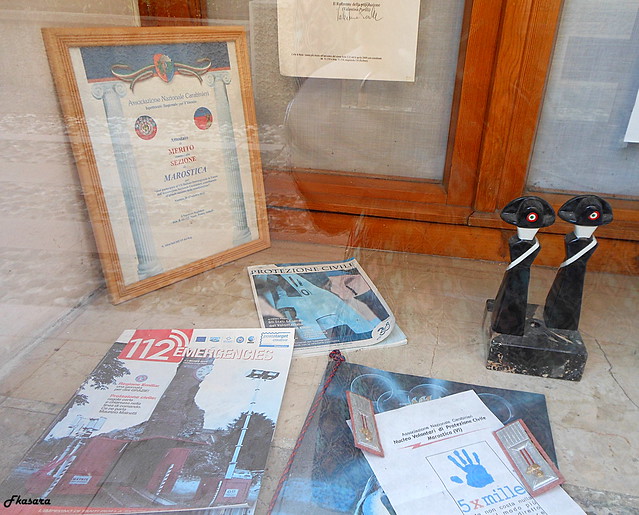 Carabinieri- shaped chess pieces
Carabinieri- shaped chess pieces
-
CHERRIES
Marostica is also famous for the cultivation of cherries that allegedly started during Roman Times. After the French domination, that put a stop to it, they started to promote it again after the First World War and in 1933 it took place the first Fair of the Cherries (still going on nowadays).
-
COFFEE
Despite not living very far from Marostica, the direct involvement of the city in the “discovery” of the coffee came as a total surprise to me. During my last trip to Marostica, it was signor Maurizio, owner of the historical bottega “Casa del Caffè” who told me all about it.
Go to Piazza Castello and follow the well’s arrow to find Casa del Caffè 😉
Apparently it was Prospero Alpini, a doctor and botanic expert born in Marostica and colleague of a certain someone called Galileo Galilei (does it ring a bell?) that, after a voyage to Egypt “discovered” the plant of coffee and imported it in Italy and consequently in Europe. If it wasn’t for Prospero Alpini, we wouldn’t ever had Italian espresso!
Since then Marostica has sort of developed its own coffee culture and in his shop Signor Maurizio also serves coffee made with a blend from Ethiopia, the country traditionally indicated as the motherland of the plant, which he calls “Elisir of Prospero Alpini”.
I’m not doing him any favour, nor he paid me for saying this, but I sincerely recommend you to pay him a visit, especially if you, as a non-Italian, have an hard time in drinking our strong espresso: the blend used for “the Elisir” is low in acidity and your stomach won’t have any difficulty in dealing with it.
WHAT TO DO IN MAROSTICA
-
VISIT THE LOWER CASTLE
A visit at the Marostica’s Lower Castle (Castello Inferiore in Italian) is not to be missed. For only 5 € you have the opportunity to visit its 11 finely frescoed rooms, six cells and walk along its battlement, which allows you have a wonderful view upon Piazza Castello (see the post’s cover picture). On the Castle’s Piano Nobile (first floor), you will see the council’s room, where still nowadays the meetings of the mayor with the council take place, and the wonderful Museum of the Living Chess Game where the costumes, the weapons and all the stuff used by the “human chess pieces” during the famous event are displayed.
-
UP AND DOWN THE UPPER CASTLE
Once in the city centre, walk along the central Via S. Antonio, climb the flight of steps heading toward the Church “dei Carmini” and take the Carmini’s Path, through which you will be able to reach the summit of the hill.
Carmini is a 500 m long naturalistic path with 133 m of elevation gain that can be tough in some points for those who are not very used to hike.
The path zigzags within a lush olive-grove
Once reached the summit, you will find a charming restaurant and the ruins of the Upper Castle, from which you will have a fantastic view upon Marostica.
On Sundays from March until October it’s also possible to walk along the Eastern part of the battlements of the town walls that, from the top, go down the hill. Since the slope is quite steep, one is required to wear a body harness.
-
WALK IN THE CITY CENTRE AND PLAY CHESS WITH FRIENDS
Marostica is charming and quite small and so you won’t exhaust yourself while filling your eyes with wonder.
The city centre is tidy and very well-preserved and the atmosphere you breathe is peaceful.
Under the porticos of the Doglione Palace you will be able to play the most important game of the city: chess, of course.
-
THE LIVING CHESS GAME
The great event of the Living Chess Game takes place every even-numbered year during the second weekend of September. Along with the representation of the historical game play, you will witness to fantastic Medieval performances and fireworks. Truly recommended.
INFO-BOX
How to visit: Marostica is an excellent choice for a day-trip;
How to reach it: visit this page
Lower Castle: open everyday 9-12.30, 14.30-18.30 [ticket: 5 €]
Battlements of the Upper Castle: March-October on Sundays 14.30-18.30 ( on Saturdays you have to book in advance ) [ticket: 5 €]
Living Chess Game: Every second weekend of September in the even-numbered years. For info and pre-sales visit this website
What to visit nearby: Bassano del Grappa, Asiago and the 7 Comunes, Vicenza, Asolo.
As someone said: “One truly get to know someone by travelling together and playing chess with him“. Why don’t you try to kill two birds with one stone and visit Marostica? 😉
I hope you enjoyed,
A presto!
SaRA

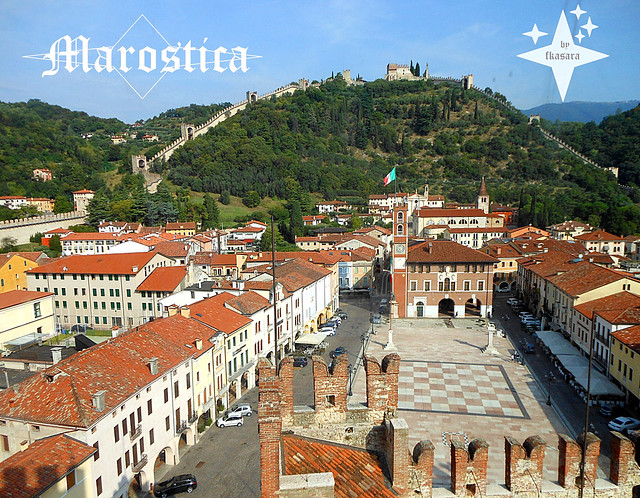
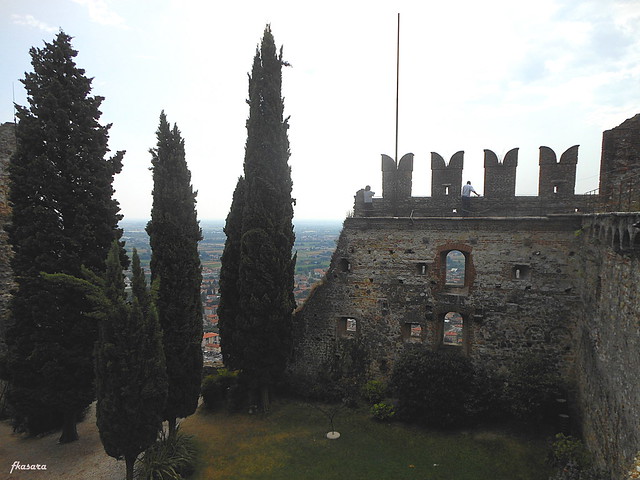
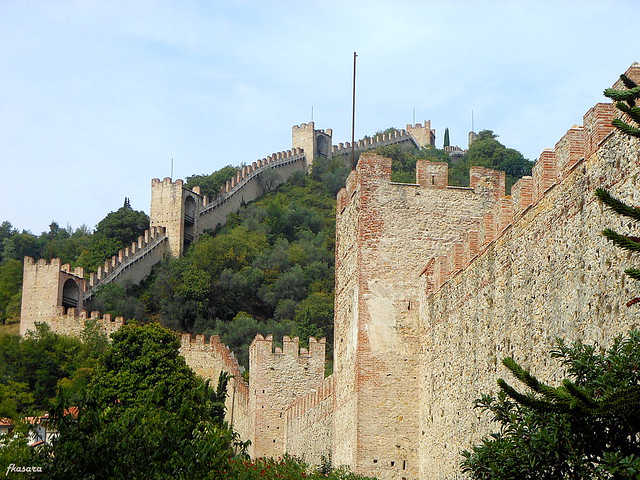
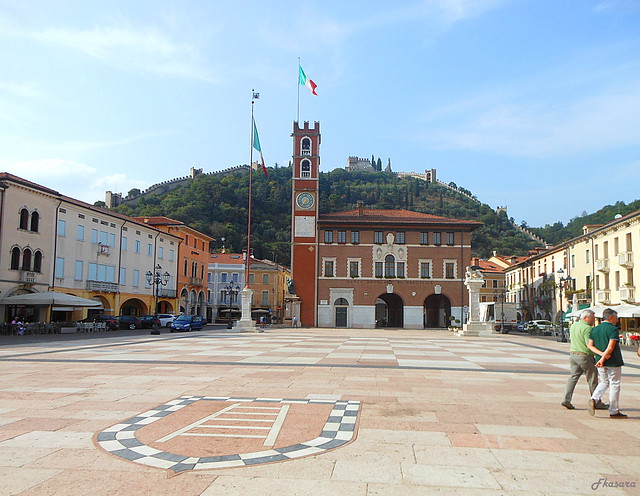
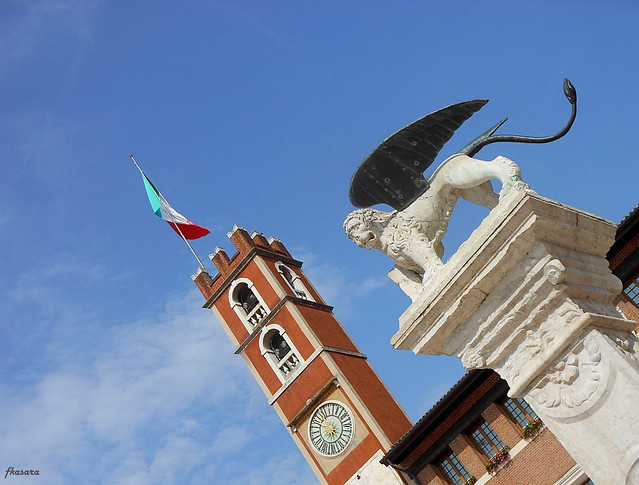


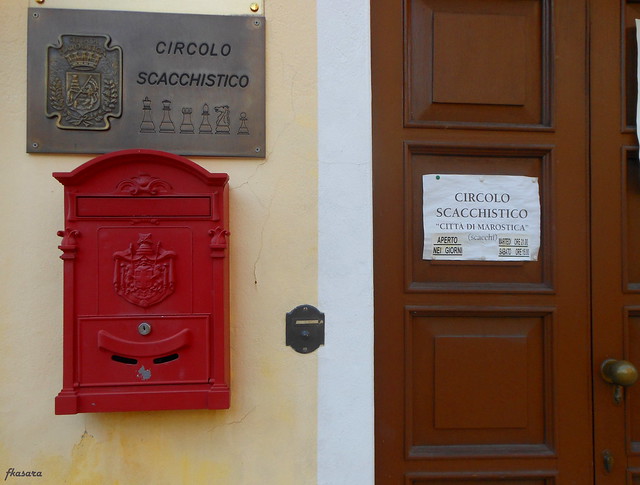

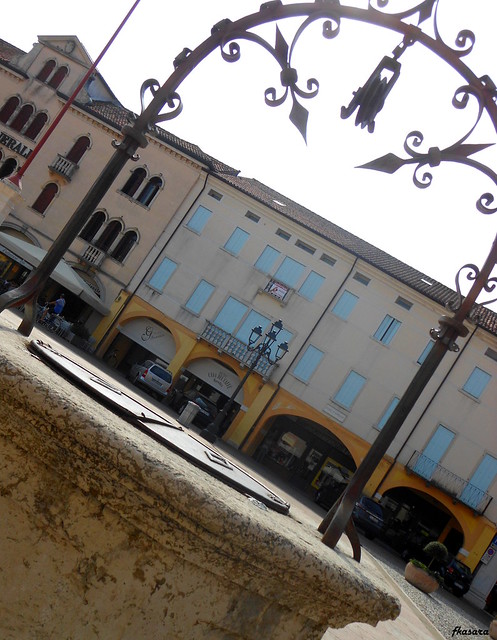
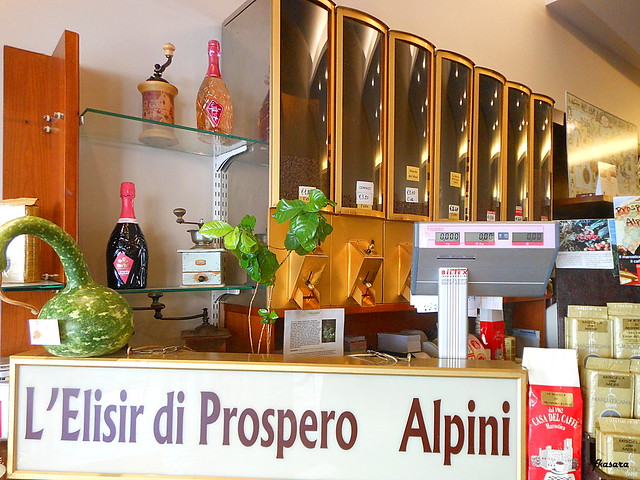

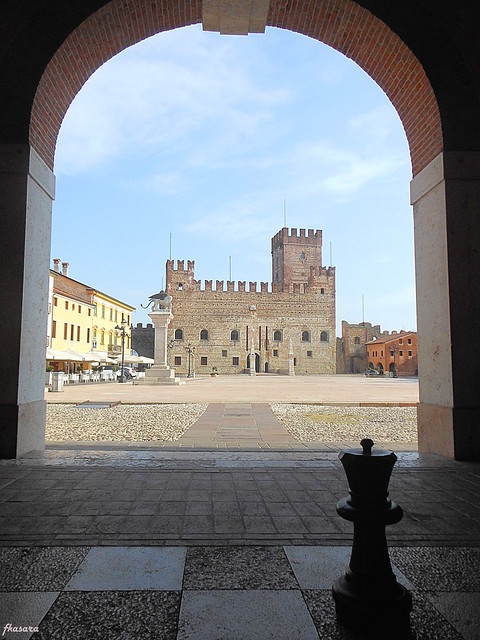


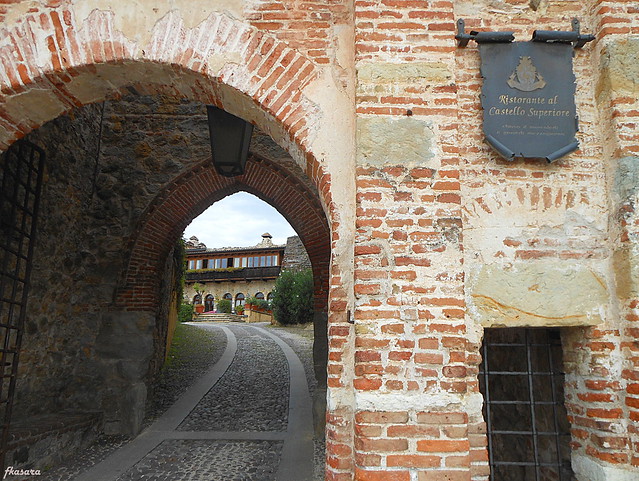

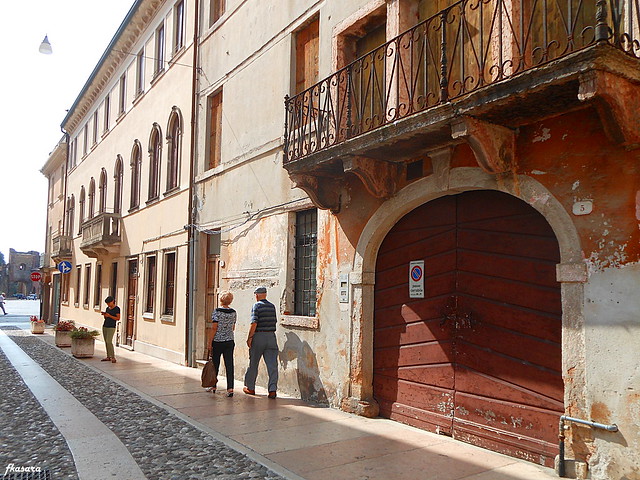
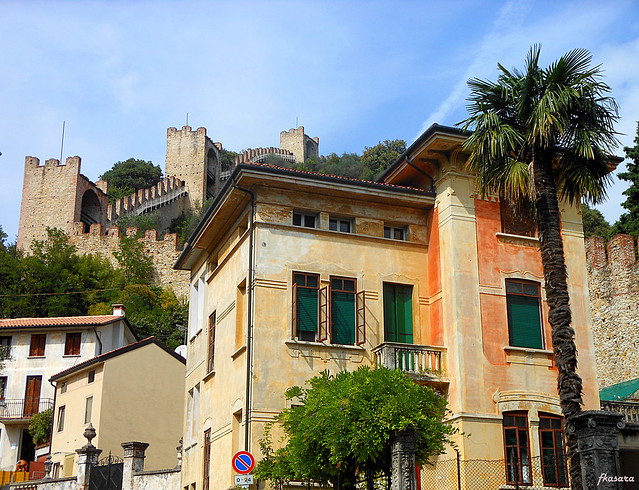
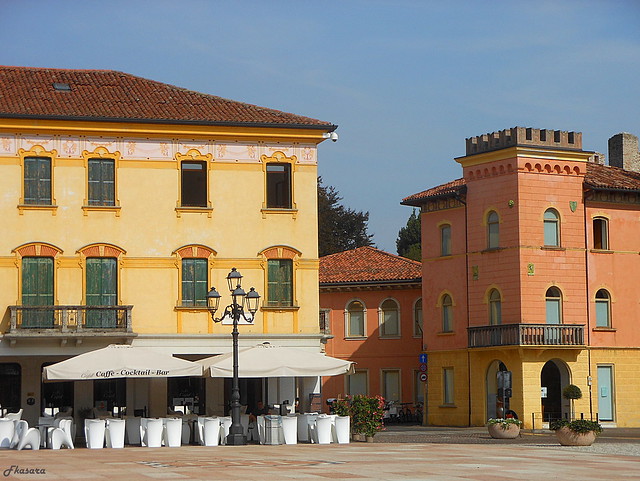
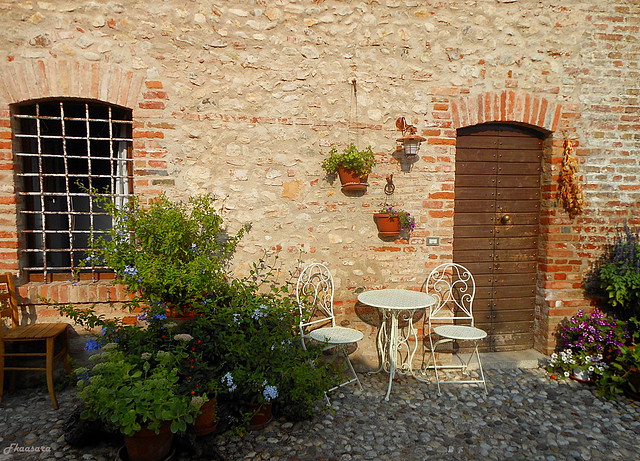
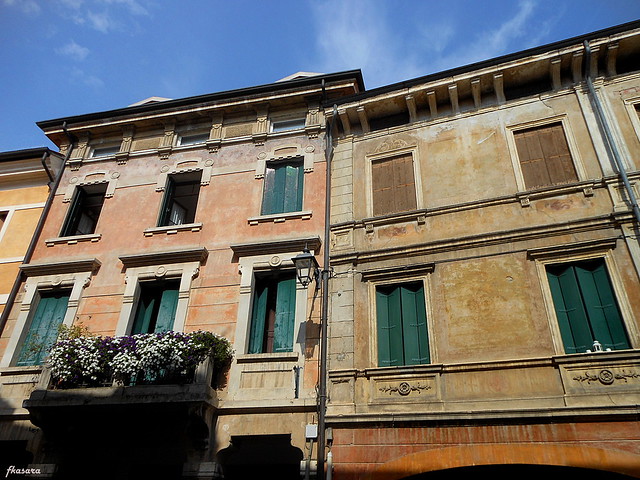
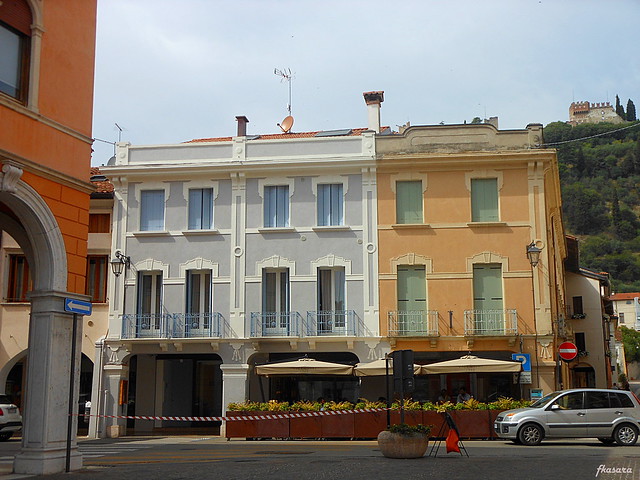

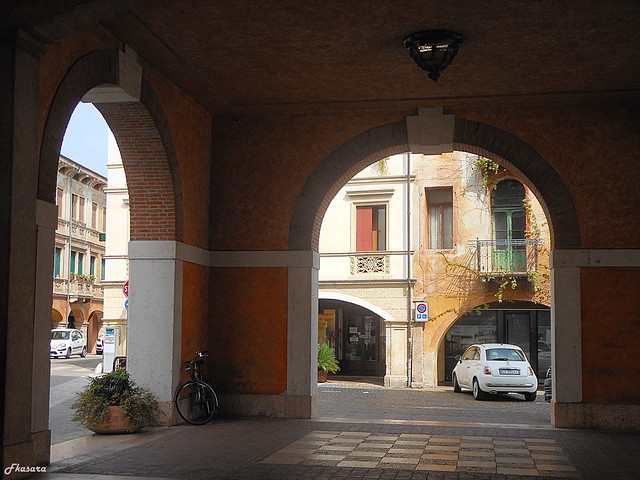
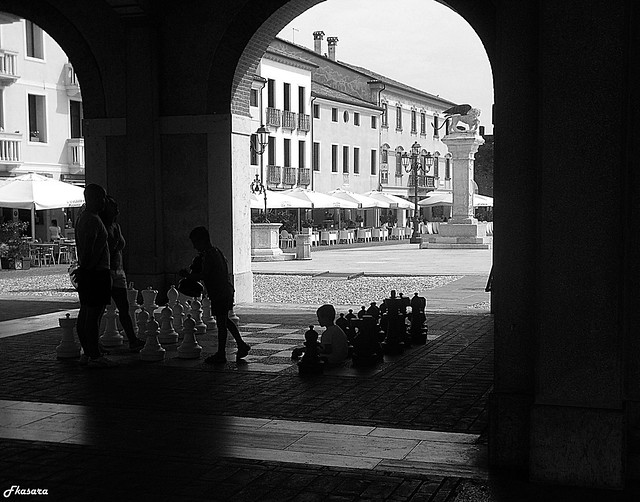
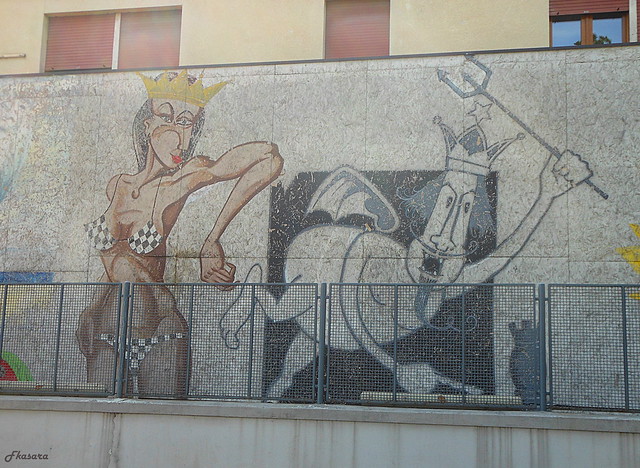
La voglia di venire a Vicenza e dintorni aumenta, Sara… Marostica deve essere bellissima! 🙂
LikeLiked by 1 person
Guarda, è piccolina ma è un vero gioiellino 😍 A me piace tanto tanto! 💕
LikeLiked by 1 person
Reblogged this on Cinepathic.
LikeLike
Grazie mille! Buon finesettimana ❤
LikeLiked by 1 person
What a charming town with such an interesting history. I can see why you like it so much. The long wall with the castles on different levels sort of reminds me of Bellinzona. Beautiful photos!
LikeLiked by 1 person
Thank you!! ❤
True, the walls do look like Bellinzona's ones a little bit. Here in Veneto we have a few examples of medieval towns with walls that "go down the hills" like that (Marostica, Soave etc.)
LikeLiked by 1 person
Fascinating! I have never heard of this town, and the living chess game is certainly a sight to behold. So there are living people dressed in chess pieces moving across the board? I hope the game is timed or they could be waiting a long time for the move is the players are hard thinkers! Another curiosity: in Slovenian, ‘morost’ means marshes. It seems to be a lovely town indeed and I love your photos.
LikeLiked by 1 person
Thank you very much ❤ I took tons of photos, Marostica is just a gem ❤
Actually, the living chess game is a representation of the legend of the "battle" between Vieri and Rinaldo, so the living chess pieces play always in the same way, as the knights allegedly did at the time 😉 Here you are a video of the event, if you're curious! https://www.youtube.com/watch?v=7qVUTAUSv8Y
LikeLiked by 1 person
Thank you! Not as exciting if it’s always the same game. 😀 They should really play!
LikeLiked by 1 person
Can you imagine!? It would end up Kasparov-Karpov with players waiting one hour before making a move 😂
LikeLiked by 1 person
Is this close to your hometown? Italy fascinates me with so many activities and high drama at every turn. Your insights are also amazing, you should definitely be a tour guide and have your own tour business!!
LikeLiked by 2 people
Yep, it’s not very far from my area! Aww, thank you very much, you’re too kind! ❤
LikeLiked by 1 person
I actually don’t visit the places close to me… maybe I should start in my own backyard
LikeLiked by 1 person
😅
LikeLiked by 1 person
Lovely post and it does make me want to visit this little Medieval town!
LikeLiked by 1 person
Thank you very much!! 💖
LikeLiked by 1 person
never heard of it!:) it’s so pretty!
LikeLiked by 1 person
It truly is! 💖 I love it!
LikeLiked by 1 person
Pingback: Abandoned Italy: Neglected Houses in Marostica – The Rover in Leather Jacket